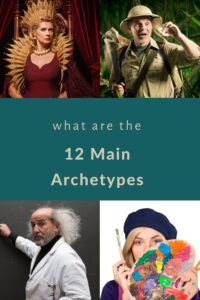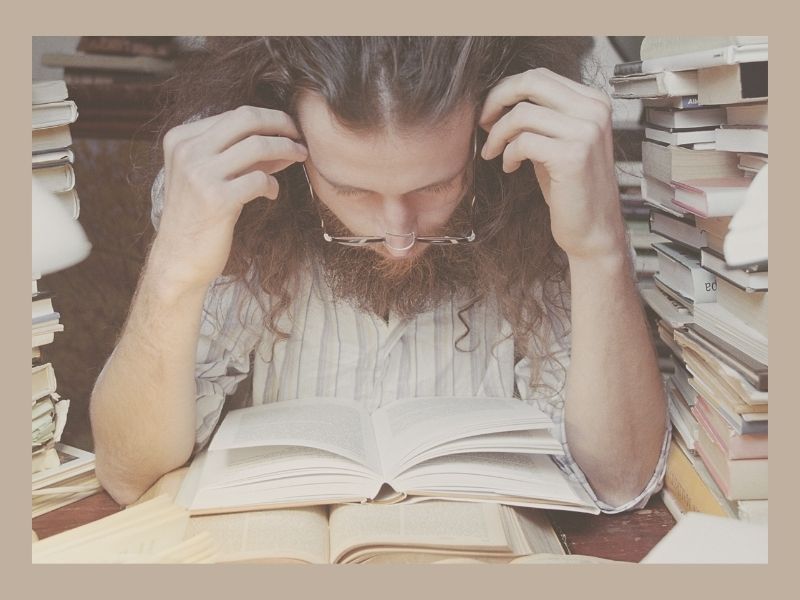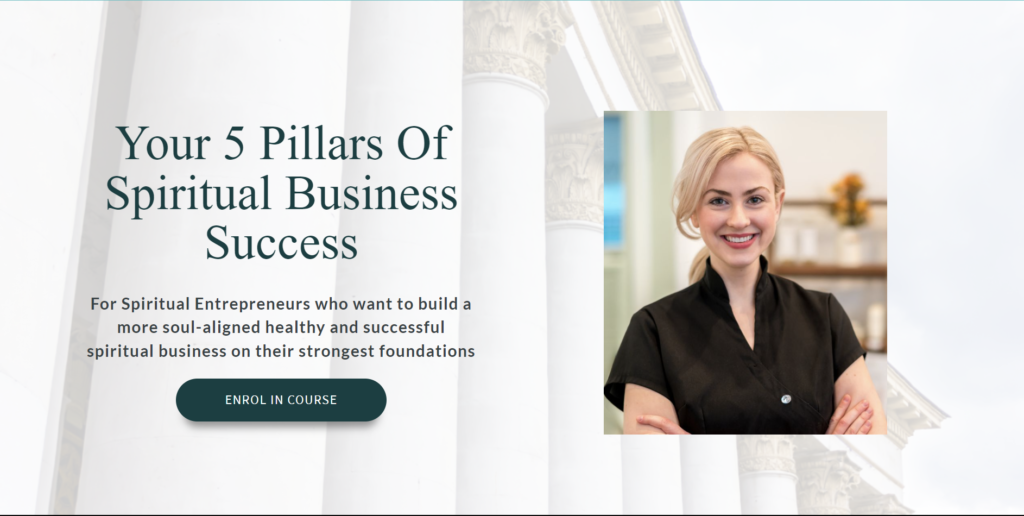Understanding The 12 Main Archetypes In Therapy, Healing and Business. What are Archetypes? And what benefits can come from understanding your main archetypal traits in your life, relationships, and work?
Understanding The Main 12 Archetypes IN LIFE AND BUSINESS
Understanding Archetypes is extremely useful in certain types of therapy and healing when approached in the right way. It is a great way to understand certain human behaviors and traits, as well as societal constructs.
I began studying Archetypes over 25 years ago from the psychological and psychotherapy perspective, the spiritual and healing perspective, and then Archetypal Branding and Marketing.
I found archetypal work is an important element of Inner Child Healing and can be extremely helpful in helping us identify more clearly our strengths and our weaknesses.
What is Archetypes?
The translation of the word Archetype in Latin actually comes from the Greek Translation of the adjective archetypos; archetype, exemplar, ideal, norm, pattern, norm, standard.
To understand Archetypes it is helpful to look at the work and views of Swiss Psychiatrist and Psychoanalyst Carl Jung. Specifically his Jung Archetypes and the Jungian Concept of the Psyche.
Carl believed that we all have human inclinations and/or traits that we in many ways are born with. What he regarded as heritable psychic structures that play a part in how we experience and show up in life.
When he used the word the Psyche he viewed the Psyche as the all-encompassing aspects of one’s thoughts, emotions, feelings, and behaviour. While many today would describe the psyche as just the mind.
According to Jung, he viewed the psyche as 3 Major Realms
Consciousness – Awareness which he regarded as the ego; the memories, thoughts and emotions you are aware of.
Personal Consciousness – a layer where we hold events that we are not consciously aware of It is where we hold events we have perhaps ignored, denied or discarded.
Collective Consciousness – the realm that holds in many ways a whole collection of Universal Traits; shared attitudes, beliefs, ideas, and wisdom that relate to individuals and large groups of individuals.
Through clinical patient and historical research, Jung discovered that many individuals no matter their culture, society, religious status, or beliefs, held commonly shared unconscious traits. From this understanding and research, the concept of Archetypes was introduced.
The 4 Major Jungian Archetypes
- The Anima/Animus,
- The Persona,
- The Self
- The Shadow
This would eventually lead to Jung suggesting there were a variety of different archetypes, which included the Child, Mother, Father, Hero, Trickster, and Wise Old Man…
He explained that different archetypes were not fixed but interchangeable with other archetypes. That is why what is regarded as the 12 Main Archetypes can look very different in certain types of work.
What Are The 12 Main Archetypes?
Today the work of the 12 main Archetypes has evolved from Jung’s Main Archetypes.
For example, Psychometric and Archetype analysis is used to assess certain traits; attitudes, behaviour, strengths, and weaknesses in therapy, healing, job placement, education, branding, and marketing.
The 12 main archetypes help us recognise and understand the most common dominant traits in the collective.

The 12 Main Archetypes
The use of Archetypes has become a bit of a trend. So Jung’s 12 Main Archetypes in many ways have been adapted and modernised to suit modern times but for this blog concerning therapy and healing I have chosen the 12 main archetypes below
Caregiver Archetype – Also known as the Nurturer, Mother, Helper, Altruist
The light aspect of the Caregiver, the Nurturer Archetype is an individual whose traits are mainly selfless, their strongest traits in life are empathy, compassion, and giving. They naturally want to nurture and protect those they meet. They are often very strong empaths and lightworkers.
Common shadow traits of the Caregiver is their tendency to protect and give unconditionally without thinking. Victim, Martyrdom, Rescuer Traits. This often leads to over-giving, lack of boundaries, and difficulties saying no. Which can lead to being undervalued, taken advantage of, exhaustion, burnout, frustration, and resentment.
Creator Archetype also known as the Artist, Creative, Innovator
The Creative Archetype’s most positive traits include the natural flair and ability to dream, create, and be original. They have a tremendous gift of imagination, innovation and self-expression
The Artist or Creative Archetype’s shadow traits include perfectionism, strong traits of neuroticism, or a tendency to put creativity over positive solutions. Overthinking and emotional instability can lead to relationship difficulties and introversion.

The Innocent Archetype also known as the Child, Dreamer, Utopian
The light aspects of the Innocent are their optimism, positivity, their ability to see good in everyone, and their desire for everyone to like them. They tend to believe the world is a great place to live. They long for innocence, rebirth, and in many ways salvation.
The shadow aspect of the innocent is their naivety, innocence, and dreamlike view of the world and others means they can lack judgment and discernment. They are one of the easiest archetypes to impress but are fearful of being punished for doing wrong.
Explorer Archetype also known as the Seeker
The light aspect of the Explorer Archetype is their sense of adventure and freedom-seeking. They enjoy seeking and exploring new places, and new experiences, they have a strong tendency towards personal freedom and space.
The shadow aspects of the Explorer Archetype include the restlessness or disease
that comes with being bored or feeling you are in one place or doing the same thing for too long. Their lack of fear or lack of boundaries for new adventures, and new places can lead to challenges around commitment, focus, persistence, rules, and boundaries. It can also be a major cause of unhealthy forms of escapism like drugs, alcohol, adrenaline junkie.Hero Archetype is also known as Champion, Defender, Rescuer, Warrior
Positive aspects of the Hero Archetype include the depth of courage, energy, and power they have to achieve something they believe is the honourable thing to do. They are about making the world a better place, defending the rights of others. They can often see the bigger picture concerning governments, organisations and society.
Shadow aspects of the Hero Archetype can be a strong need for power and limelight. Their tremendous level of ambition can get work against them or others. Doing almost anything including stepping over others or sacrificing themself to achieve that goal. Can be viewed negatively as Conspiracy Theorists although they tend to have a wider view than others on what is going on.

Magician Archetype – sometimes known as the Alchemist, Wizard, Sorcerer
The Magician and Alchemist Archetype’s most positive and light traits include the ability to be a catalyst for transformation and growth. They tend to have a much stronger and deeper connection to the universe and unseen than many other archetypes do.
So tend to have strong intuitive and or psychic traits. I tend to attract a lot of Alchemists in my work as many are natural healers, spiritual teachers, and transformational coaches.
The Magician’s shadow traits include being easily seduced by magic, money, and illusion. They don’t always have patience and like the Magician Apprentice want to get the results without always doing the work or practice.
This alongside having very strong opinions can make them sometimes the challenging student. Or cause them to not reach their full potential or fall for their own illusions. They can as quickly destruct or self-destruct as transform and make great change.
Lover Archetype also known as the Romantic Archetype
The Lover or Romantic Archetype’s main light traits are feminine, love, emotions, passion, sensitivity, devotion, and commitment. This archetype is easily suppressed by strict or rigid parenting.
The Romantic or Lover Archetype’s shadow traits include their deep fear of rejection, their need for someone else, and their need to please. Lack of Self-Love and Self-Care. Can have a strong tendency towards co-dependency issues, over-attachment, and neuroticism. Suppression of the Lover Archetype can lead to all sorts of addictions and promiscuity.
Jester Archetype is also known as the Clown, Fool, Trickster, Party Host,
Jester Archetype’s main positive traits are their strong ability to have fun, and be the life and soul of the party. They have a natural ability to uplift others and get others to join in and engage in activities or communication. Tend to be entertaining and or a natural comedian. Their main motto tends to be you only live once.
Common Jester Archetype shadow traits include not always taking things seriously, because they fear being judged as boring. They often have challenges with being mature, sensible, and taking responsibility. Their darkest shadow elements include deception, lies, and manipulation.
The main reason the Jester is viewed as both positive fun and as the Trickster devious and deceptive is because of their polar opposite tendencies. The Jester can therefore be fooled by their mind, believe anything is possible, and not see their weaknesses or limits within a situation.
Orphan Archetype also known as the Communitarian, Realist, Everyday Girl Or Everyday Man
Realist Archetype’s main positive traits include their strong abilities of equality, they are normally highly sociable, and are particularly relatable to the man on the street. Think of the boy or girl next door.
Realist’s shadow traits include their fear of being the odd person out, excluded, so they can easily themself and their values just to be part of the group, the community.
Rebel Archetype also known as the Outlaw Archetype
Rebel Archetype’s main light traits are their Free Spirit, their ability to expand and break perceived limitations, and their level of independence.
Rebel’s main shadow traits include their fear, frustration with rules and boundaries, thinking of the Rebel without a clue, or Rebel without a cause. In the negative state, they can have a tendency to go against the grain or rules just for the sake of it. This can lead to a lot of self-destructive or self-sabotaging patterns in life, relationships, work, and business.
Ruler Archetype is also known as the Leader, Father, King, Royalty, or Sovereign Archetype
Ruler Archetype’s main positive attributes include their natural ability to be a leader, to lead than to be led as a Benevolent King. They tend to be authoritarian figures, that have courage, strength, and a broad view of a situation.
Shadow traits of the Ruler Archetype include repressed anger, and the need to dominate some sort of control or power over others. And their inability to see what they are suppressing rather than leading or motivating. They struggle to trust others and to delegate. And insatiable thirst for material success or status, difficulty asking for help or admitting when wrong.

Sage Archetype is also known as the Philosopher, Teacher
A Sage’s positive attributes include a strong thirst for deep wisdom, truth, and knowledge. They tend to live a life full of introspection and introversion. They tend to philosophize their life’s journey as a series of lessons and insights.
The sage in some ways is the more mature, knowledgeable, and wiser Magician.
Common Sage shadow traits include they can be the never-ending student, always learning, but never taking any action or using their knowledge for any common good. Often a life that is analyzed than lived. Can struggle to be fully in the moment.
Introduction To The 12 Main Archetypes
Now this is just an introduction to understanding the 12 Main Archetypes. Archetypal healing goes a lot wider and deeper. When applied in the right way it can be a powerful tool in Inner Child Therapy, in Healing, and in certain types of Spiritual Coaching and Mentoring.
The reality is there are so many different recognised archetypes in the collective unconscious. So many that can be used and explored to support us in different ways.
But the most important one for you to explore your strengths and vulnerabilities- is identifying your strongest main archetype. That main archetype that shows up in you in the way you live your life every single day.
Understanding Yourself Through The 12 Main Archetypes
I believe the more we understand our main archetypes, the more we can understand ourselves. It can also be extremely helpful in identifying your strengths and those things you need to work on. I also use Archetypes as a tool to help healers, coaches, and Spiritual Teachers build a business around their strengths rather than their weaknesses. Archetypal Branding to help capture the energy and emotion of their business and them in their marketing.
Understanding Your Business Through The 12 Main Archetypes
Understanding the most dominant archetypal traits of your business can give you a great edge in business and marketing. It can help you understand the energetic traits and values of your business and the soul clients and customers your business is more aligned with.

What Archetypes Can Teach Us About Our Purpose
Taking Back Your Sovereignty
Moving out of the slave into the leader, king, and queen archetype energy.













Notice: Undefined variable: post in /home/stress16/public_html/eileenburns.co.uk/wp-content/themes/Divi/comments.php on line 58
Notice: Trying to get property 'comment_status' of non-object in /home/stress16/public_html/eileenburns.co.uk/wp-content/themes/Divi/comments.php on line 58